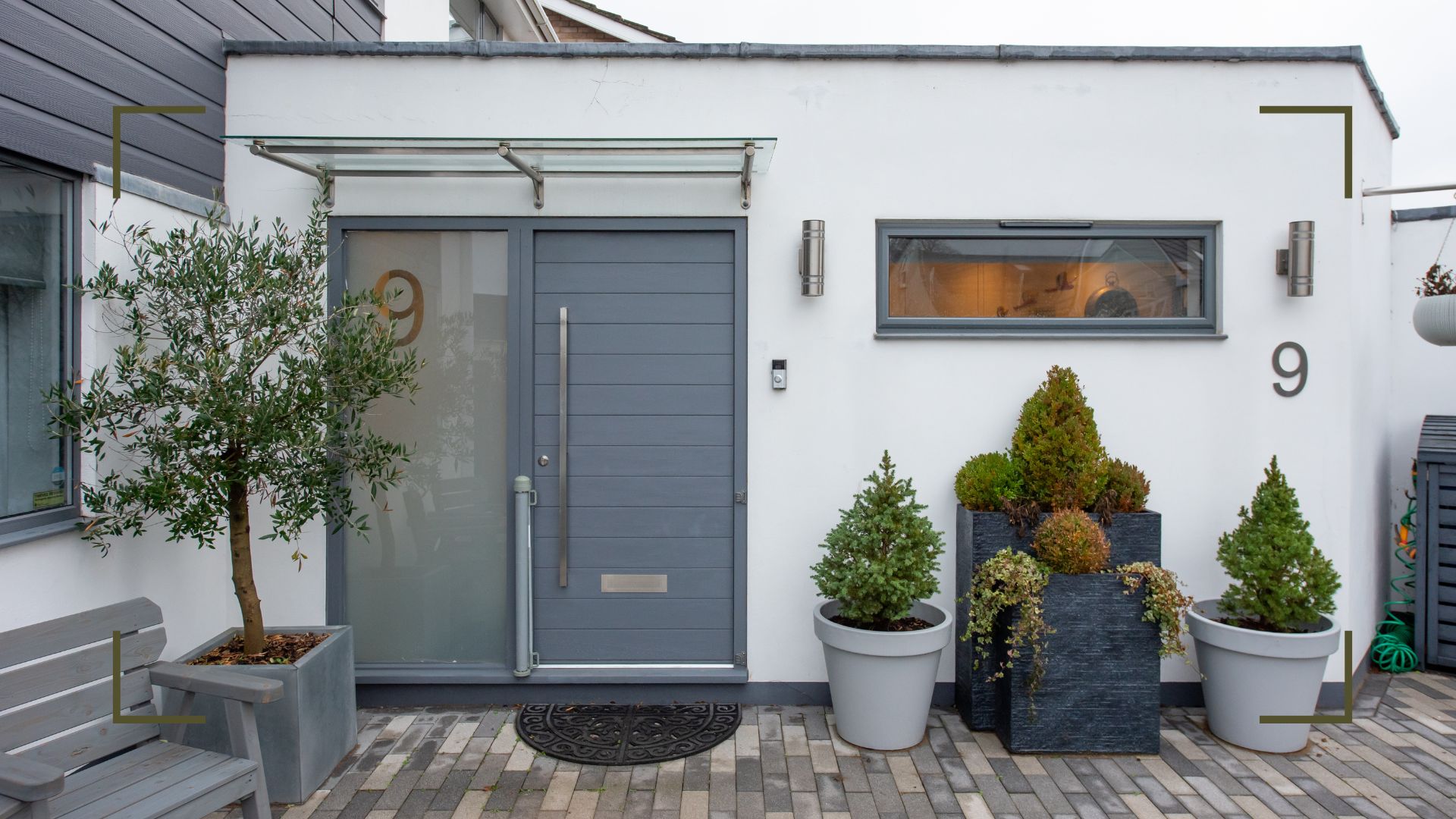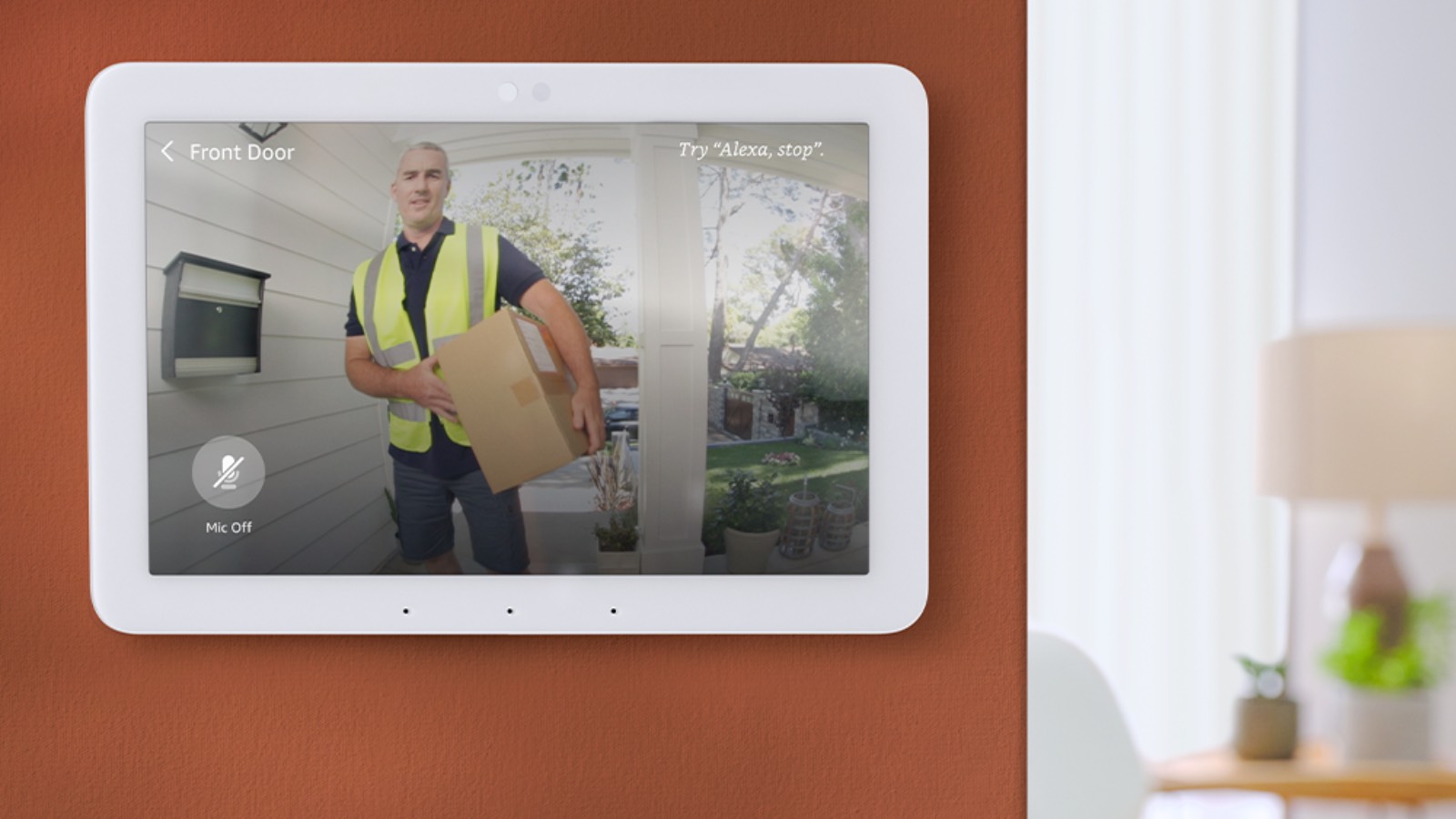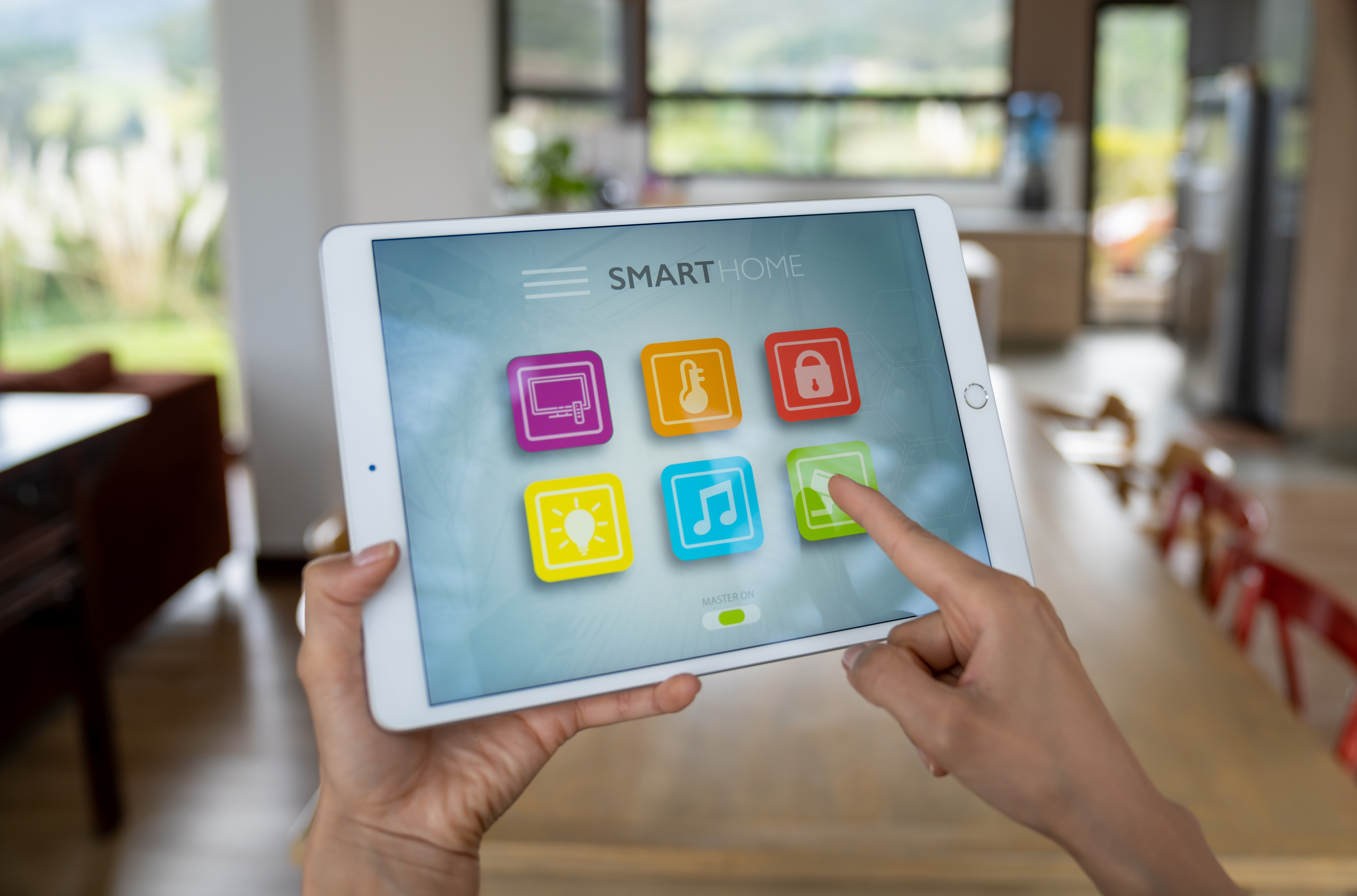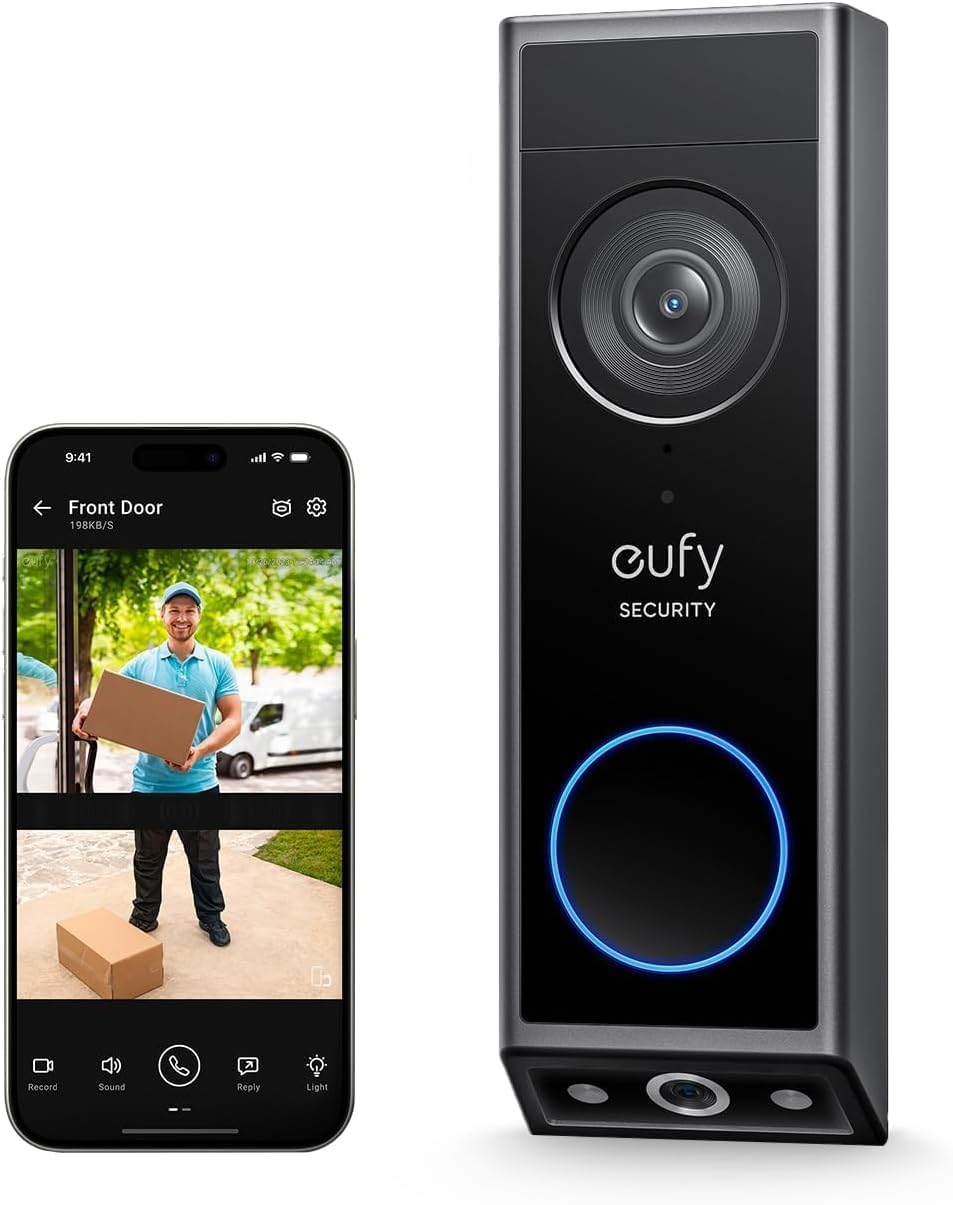7 crucial things experts want you to know before buying a video doorbell, to guarantee value for money
If you're ready to move on from a humble ding-dong bell to an all-seeing security camera, read this first


Welcome to the age of video doorbells, the small but mighty gadgets that act as your eyes and ears at the front door. No more missing the postie’s polite tap or dreading cold callers’ knocks.
With a wide-angle camera and two-way microphone, you can see, hear, and speak to whoever’s there — whether they’re welcome or not. It’s almost like having your own bouncer.
Sounds great, right? It can be, but choosing the right one isn’t always simple. With brands like Ring offering dozens of options, even setting a budget can be tricky. That's why I've consulted with experts to share their professional advice, making the decision easier.
What you need to know before buying a video doorbell
“Video doorbells range from around £70 for basic models to £300 for premium ones with advanced features,” says Hayley Brown, Smart Home Expert at AO.com. “Rather than picking a brand first, decide your budget based on your security needs.”
So, with Hayley’s advice ringing in our ears (pun intended), let’s explore the key things to consider before buying a video doorbell.

Hayley is AO's Audio, Smart Home & Tech expert who specialises in all things Apple. A persistent traveller, she loves a jaunt away and spends most weekends in the great outdoors camping with her partner Leon. The pair were lucky enough to traverse the North Coast 500, and when you catch them at home, you'll find them caring for their treasured Manchester Terrier, Bruno.
1. How your footage will be stored and accessed
There are typically two ways that doorbells store your footage. "Some video doorbells use a micro-SD card, meaning you don’t have to rely on a subscription," says Hayley Brown at AO.com. "Yet most on the market go for cloud storage, which allows you to access recordings via an app on your mobile phone or computer. This allows you to check how long the footage is stored and lets you keep an eye on how many clips you can retain before deletion."
One of my ongoing frustrations over the years with video doorbells has been accessing the footage stored on them. Being tied into costly subscriptions, or simply losing the footage because online cloud storage space 'expires'.
Sign up to our free daily email for the latest royal and entertainment news, interesting opinion, expert advice on styling and beauty trends, and no-nonsense guides to the health and wellness questions you want answered.
That said, using MicroSD cards involves a lot more admin on your part in regularly reviewing the content and removing footage from the card when it gets full.

"While cloud storage is convenient and generally secure, it often comes with a monthly subscription fee, and those costs can quickly add up," says Chevy Xu, product expert at TP-Link, which produces the Tapo video doorbell range.
"These subscriptions are often tiered and range from a few pounds to over £10 a month for the more premium plans. It’s also worth checking what’s actually included, as some plans limit the amount of footage you can store or the duration it is kept."
For that reason, I'd recommend picking a doorbell that offers both local and cloud storage, giving you the freedom to choose what works best for you.
Tapo and Yale both offer doorbells with this option, and Eufy has local-storage-only doorbells. It estimates this will save you around £59.88 a year in subscription fees, based on an average monthly cost of £4.99.
"Having the option of local storage is always a great bonus. It means your recordings are saved directly to a microSD card, so they’re protected even if your Wi-Fi connection drops or someone tries to interfere with your signal," says Chevy.
2. Certain features are locked into a subscription
Subscriptions aren't just tied to the footage your doorbell records. Some video doorbells, for example, Ring's doorbell range, will only allow you to access certain features if you pay for a subscription. Others, such as Tapo and Yale, will have all its features available to you without an extra charge.
In the case of Ring, you'll be able to see a live view from your doorbell and get notifications if anyone rings the bell or if there's movement near your door. But you'll have to pay to use the two-way mics to talk to visitors and to save footage.
Subscription prices start from £4.99 a month for a basic package that saves up to 180 days of 'video event history'. To receive a call and talk to people at your doorbell, you'll pay from £7.99 a month. And you'll pay £15.99 a month for 27/4 footage recording. That means you'll be paying anywhere between £59.88 and £191.88 a year on top of the doorbell's cost. Ring is known for best-in-class picture quality and motion detection. You'll just need to decide if it's worth it.
3. What angle of vision is offered
A good field of vision is vital to capture activity around the doorbell. "Most video doorbells will film content on a set angle of visibility, but you can aim to get a field of view of at least 140° horizontal for the best results," advises Hayley.
"This means you’ll capture the doorstep and any side passage should you have one. If you’re vertically mounting yours, then check that the mount covers head and shoulders, not just the chest of whoever’s rang the doorbell."

4. Battery-powered versus wired doorbells
Your next decision is whether you want to power your doorbell via a battery or by wiring it into existing electrics. "When choosing a video doorbell, it’s worth considering how it’s powered, as this can affect both installation and upkeep," advises Chevy.
"Some video doorbells are hybrid, meaning they can be battery-powered or hardwired. There are also battery-powered or hardwired-only options available. It is important to check how it is powered so your set-up isn’t limited."
"For a typical household, a battery video doorbell will grant the largest bonus without a struggle," says Hayley. "They are far easier to install than a wired video doorbell, coming with a mount bracket to allow you to place it beside your front door, which can be easily fitted with a drill bit."

"Battery-powered doorbells are quick to set up and ideal for renters or anyone wanting a clean, drill-free installation – such as people living in a period property," agrees Chevy. "However, they require periodic simple maintenance to recharge the battery."
TP-Link says the 10,000mAh battery that comes with its wireless doorbells could keep it powered for up to 7 months. But if you live on a busy street where your camera is triggered regularly, it will run out far sooner.
"Wired video doorbells are a different story altogether," Hayley added. "Because they use existing doorbell wiring, this will require an electrician for the safest course.”
"Wired models offer continuous power and reliable performance, with less maintenance over time, though installation can be more involved and depends on your existing wiring and transformer," Chevy continues.
"Each option has its pros and cons: battery-powered models prioritise flexibility and ease, while wired versions deliver long-term consistency without the need for recharging. It’s important to note that some advanced features may only be better supported if wired."
5. Will the picture quality be good enough?
There are two main reasons why you'll probably want a video doorbell. To deal with arriving visitors and deliveries, and for security. And on the latter point, it's crucial you have good picture quality.
"The resolution for your video doorbell is important, so keep in mind that you’ll want a 1080p video if you’re looking to identify faces or any license plates," says Hayley. "2K or 4K imaging will also help to sharpen details, but you should equally pay attention to a smooth frame rate and latency to make motion capture clearer.
"It’s worth having a look at what the video doorbell can capture at night or in the dark," says Hayley. "You can often check online to see this as sample footage. Night vision is another key consideration – look for infrared or a specific night vision which allows you to capture content in black and white."
6. You'll (probably) want a chime unit
The joy of video doorbells is that they will send an alert or even call your phone if someone is at the door, so you can speak to whoever is on the other side of it without opening it or even being at home.
However, unless you live alone and you and your phone are joined at the hip, it's likely you'll want a chime unit. This plugs into a socket or can be hard-wired somewhere central in your home, and sounds a chime when the doorbell rings, so you can still use it conventionally. And, trust us, you will still want this capability.
Many video doorbells come bundled with a chime. Others are compatible with existing mechanical or digital chimes. But you should always check.
7. Will it work with other smart home security?

Suppose you're security-minded enough to fit a video doorbell, you'll also likely want to fit other smart home tech, such as window and door sensors, security floodlights and audible alarms.
"Most video doorbells are easy to integrate into your smart home system. Whether it's your alarm or window sensors, you’ll be better off committing to the same brand for seamless connection," says Hayley.
At the very least, it's worth insuring all your devices work with 'Matter' – a new connection standard for smart home devices used by Google, Amazon, Apple and more. Or you could stick to a subset such as Apple Home, Google Home or Amazon Alexa.
Our favourite video doorbells

Doorbell subscriptions can be costly over time, so if you want to avoid them we can't recommend this model highly enough. It has excellent image quality and great night vision, comes with a separate plug-in chime and its huge 10,000mAh battery will last for months between charges.

There's lots to love about the Nest. It can be wired or wireless, gives a great view (not too wide or too narrow) and has a clever facial recognition feature so it can tell you who's at the door. There is a subscription with this one, but lots are features are accessible without paying it.

Eufy's E340 has not one but two cameras – one facing visitors and one pointing at your doorstep, so you can keep an eye on parcel deliveries and catch 'porch pirates' in the act. It also packs 8GB of built-in storage for your footage, and can be run without a subscription.
Armed with all the information above, you are now ready to make a more informed decision about the video doorbell that best suits your needs. My video doorbell is one of the everyday smart home devices I now can't live without, so it pays to get the right one.

Amy is a PPA award-winning Digital Editor who has been working in the wonderful world of interiors for over 16 years. She has worked on titles including Inside Readers’ Homes, Inspirations for Your Home, Country House & Home and 25 Beautiful Kitchens magazine. After a stint on Beautiful Homes, she joined Ideal Home in 2010 as a Consumer Editor, then Technology Editor where she was better known as 'Girl About Tech' to prove her credentials as a product expert before landing the role of Digital Editor of Ideal Home in 2017. She has gone on to work as Group Digital Editor at Ideal Home, Homes & Gardens & Livingetc, Head of Homes Audience at Future, and Homes Editor at Saga.
Amy now works freelance across leading world-renowned Homes & interior, Lifestyle and Tech titles such as Saga, Tom's Guide, Digital Trends, Homes & Gardens, Real Homes and Ideal Home.
You must confirm your public display name before commenting
Please logout and then login again, you will then be prompted to enter your display name.